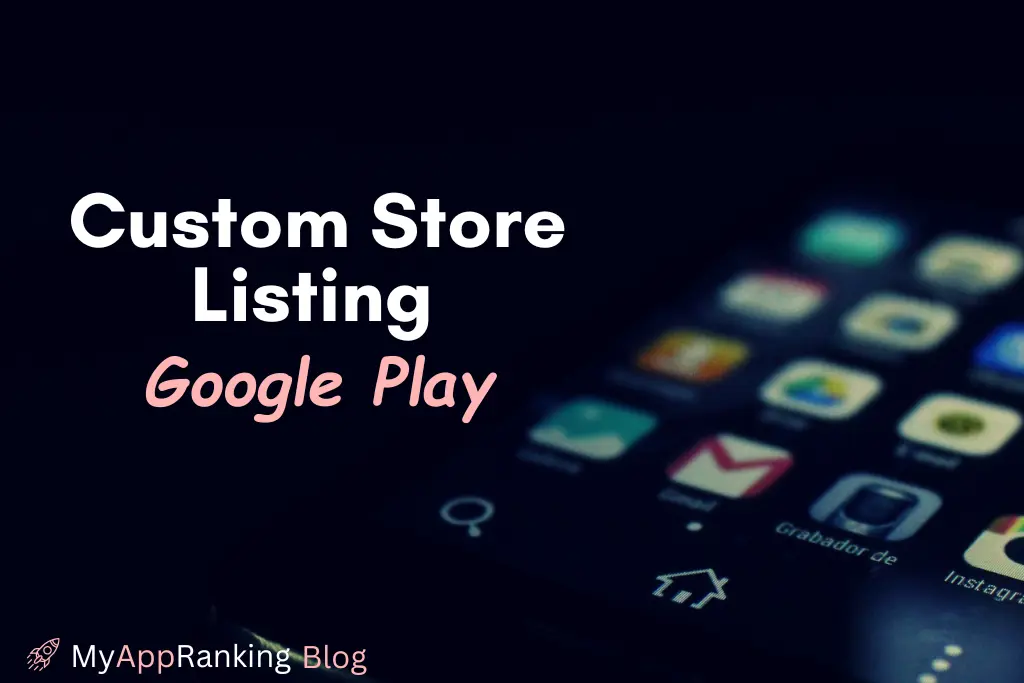A Comprehensive Guide to Google Play Custom Store Listings

In the fast-evolving landscape of mobile applications, establishing a standout presence on the Google Play Store is paramount for the success of any app. One potent tool at your disposal is Google Play Custom Store Listings. This feature empowers developers and app owners to tailor their app’s presentation on the store, providing a unique and captivating experience for potential users. In this comprehensive guide, we will delve into the intricacies of Custom Store Listings on Google Play, covering everything from understanding the guidelines to implementing effective strategies.
Understanding Google Play Store Listing Guidelines:
Before embarking on the customization journey, it is imperative to acquaint yourself with Google Play’s meticulous listing guidelines. Adhering to these guidelines ensures your app stays compliant and does not encounter any hurdles during the submission process. Pay close attention to aspects such as app content, images, and descriptions to guarantee alignment with Google’s policies.
Navigating the Google Play Console for Store Listings:
Accessing and managing your app’s listing is seamlessly done through the Google Play Console. Upon logging in, locate the “Store Listing” section to commence the customization process. This is where the opportunity arises to make your app stand out and entice potential users.
Creating Google Play Store Listings:
1): App Title and Description:
Craft a compelling app title and description that accurately represents your app’s features and benefits. Incorporate relevant keywords, including “Custom Store Listings Google Play,” to enhance discoverability.
2): Graphics and Multimedia:
Elevate your app’s visual appeal with high-quality graphics, screenshots, and promotional videos. A visually arresting app page can significantly impact user engagement.
3): Localization and Translation:
Tailor your app’s listing to different regions and languages. The Google Play Store allows for the creation of localized listings, making your app more accessible and appealing to a global audience.
4): Google Play Store Listing Experiments:
Experiment with various elements of your app listing, such as images, text, and graphics, to discern what resonates best with your target audience. Leverage the “Google Play Store listing experiments” feature to conduct A/B testing on different components.
5): Custom URL and App Name Reservation:
Secure a custom URL for your app and reserve your desired app name on the Play Store. This aids in brand consistency and ensures users can easily find and remember your app.
6): Country-Specific Listings:
Utilize the “Google Play console add country” feature to customize your app’s presence for specific countries. This can include localized descriptions, images, and even pricing.
7): Google Play Store Listing Translation:
Optimize your app for international markets by providing accurate translations for your app’s content. This ensures a seamless experience for users who speak different languages.
8): Google Play Store Listing Requirements:
Stay abreast of the specific requirements set by Google for app listings. This encompasses guidelines on app size, content, and compatibility with different devices.
Advanced Customization Options:
1): Custom Store Listings Google Play Console:
Delve into the advanced customization options available in the Google Play Console to fashion a unique and memorable app page.
2): Creating a Custom Mobile Store:
Implement features like custom banners, app showcases, and interactive elements to elevate your app page into a personalized mobile store.
3): Android Custom App Store:
Leverage Android-specific customization options to optimize your app for the diverse range of devices running the Android operating system.
4): Google Play for Work Store:
If your app targets enterprise users, explore the features available in Google Play for Work. This facilitates the secure distribution of apps within a corporate environment.
Troubleshooting and Support:
Should you encounter any challenges or require assistance with your Google Play Store listing, peruse the “help with Google Play Store listing” resources provided by Google. The support documentation and forums serve as invaluable sources of information and aid.
Conclusion:
In conclusion, Google Play Custom Store Listings offer a robust means of enhancing your app’s visibility and attracting a broader audience. By comprehending the guidelines, exploring customization options, and staying informed about best practices, you can craft a compelling app listing on the Google Play Store. Seize the available tools and features to make your app stand out amidst the competition, and continually refine your approach based on user feedback and data gleaned from your listing experiments. As the app marketplace evolves, the strategic implementation of Custom Store Listings will prove instrumental in ensuring your app’s continued success.
Do you Want
More App Downloads?
Boost the Mobile App Growth with the Ultimate Mobile App Marketing Experts
Latest Blogs
Do you Want
More App Downloads?
Boost the Mobile App Growth with the Ultimate Mobile App Marketing Experts
Google Play Store Listing Guidelines provide rules for creating compliant and engaging app listings. Adhering to these guidelines is crucial for a smooth submission process and overall app success.
Utilize the “Google Play Store listing experiments” feature to conduct A/B tests on various elements such as images, text, and graphics. This helps you identify what resonates best with your target audience.
Yes, the “Google Play console add country” feature allows you to customize your app’s listing for specific countries. This includes localized descriptions, images, and pricing tailored to each region.
Secure a custom URL for your app during the listing creation process. This enhances brand consistency and makes it easier for users to find and remember your app.
Google Play Store Listing Experiments enable you to test and optimize various components of your app listing, helping you understand what attracts and engages users the most.
Provide accurate translations for your app’s content using the “Google Play Store Listing Translation” feature. This ensures a seamless experience for users who speak different languages.
Yes, stay informed about Google’s requirements for app listings, including guidelines on app size, content, and compatibility with different devices.
Yes, explore advanced customization options in the Google Play Console to create a unique and memorable app page, effectively turning it into a personalized mobile store.
Explore the “help with Google Play Store listing” resources provided by Google, including support documentation and forums, for valuable information and assistance.




